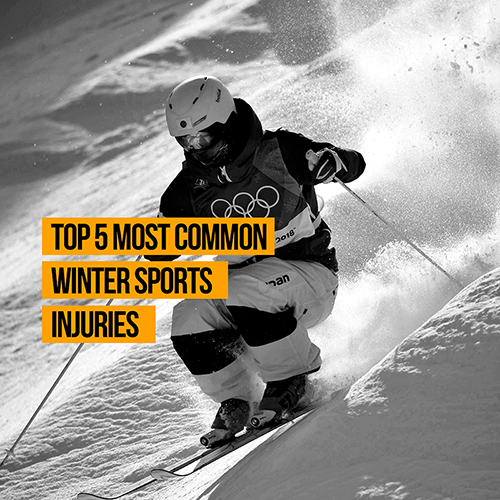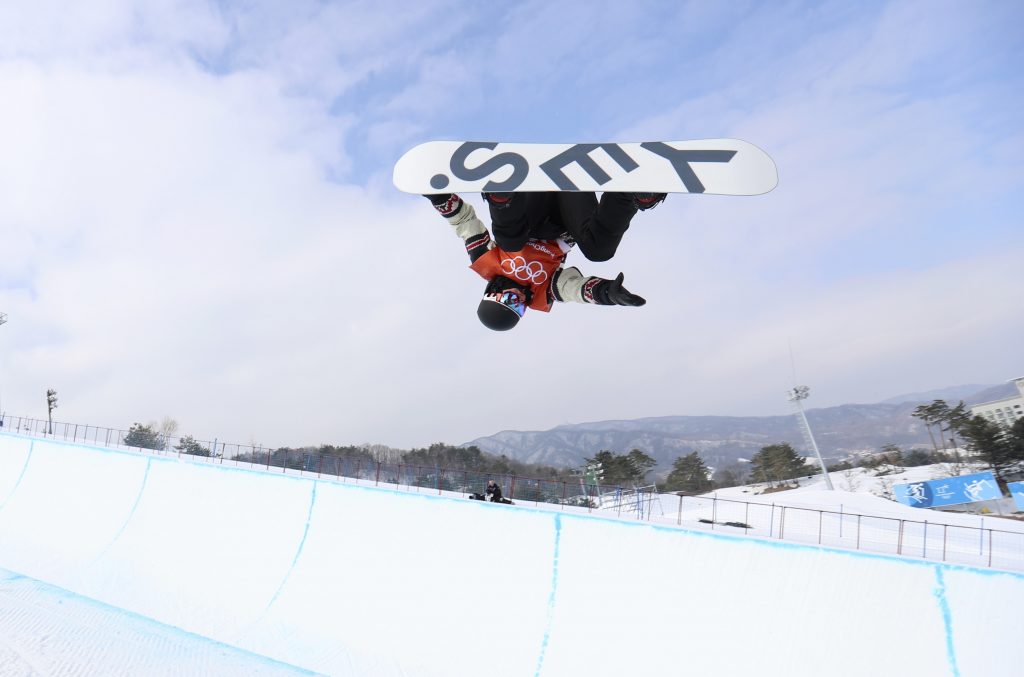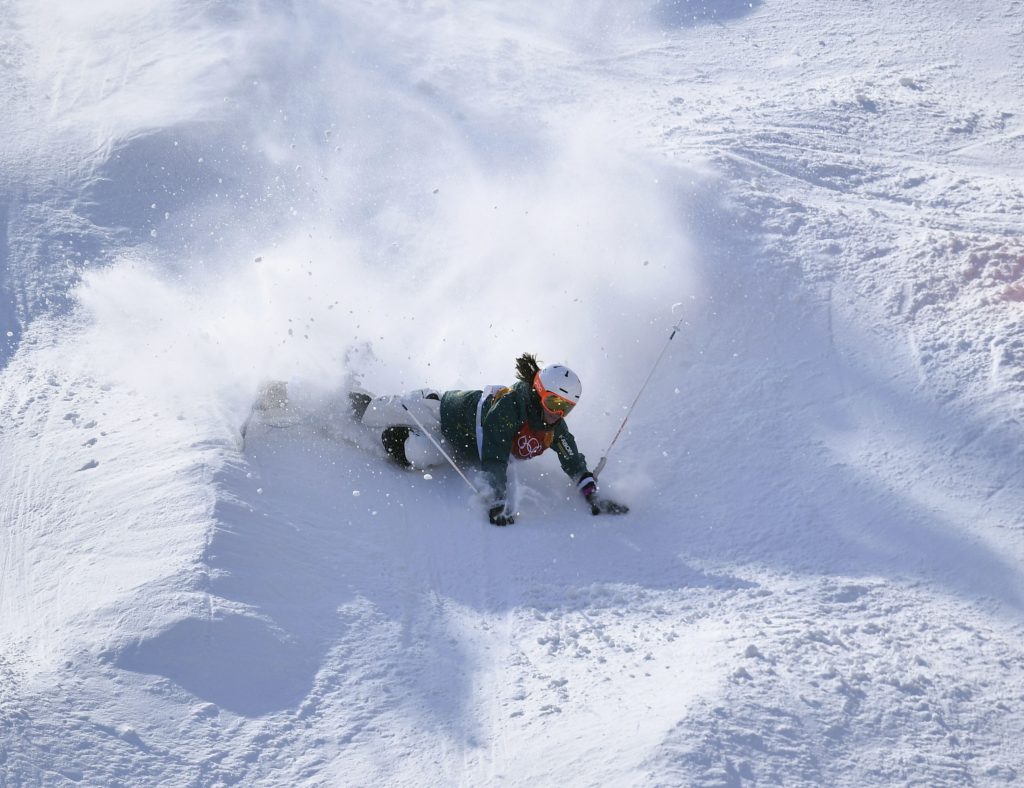In case you didn’t know, the Winter Olympics officially get under way today(Fri 9 Feb) in the South Korean county of Pyeongchang.
The games will run from the opening ceremony which takes place on the 9th right up until the 25th when one country will sit atop the medal table and crown themselves the best winter sport nation on earth.
Hint: It won’t be Russia this time.
We pondered that this feast of snow and ice might inspire you to hit the slopes yourself, and thought it appropriate to share with you some of the most common injuries you can suffer while strapped to your ski’s and board.
Our research shows that for every 1000 people that take to the slopes, there are two to three injuries per day that require medical treatment, with the individual risk of injury has been calculated as one injury per 300 days of skiing and snowboarding.
The risk is especially high for those under the age of 18, who have an incidence of injury rate that is three times higher than those over 18.
So here they are, we’ve picked out the five most common injuries you’re likely to suffer while skiing or snowboarding, as well as some practical advice on what you can do to prevent and treat them, should you wipe out.
Knee Ligament Injuries
What is a Knee Ligament Injury?
Injuries to the knee joint account for around one third of all skiing injuries. The Medial Collateral Ligament (MCL) of the knee has always been the most common knee injury, as a twist of the knee often leads to a minor MCL sprain. Also while the overall percentage of knee injuries has remained constant over the past 25 years, there has been a dramatic rise in the number of knee ligament ruptures, particularly ruptures of the Anterior Cruciate Ligament (ACL).
There are several reasons for the rise in ACL injuries during skiing. Diagnostic investigations such as MRI have meant that the ability to diagnose ACL injuries has improved over the years. Also, the improvements in ski boots and bindings that have helped reduce ankle and shin injuries appear to have contributed to the increase in ACL injuries. The forces that had previously affected the ankle and shin are now dissipated to the knee joint, with the ACL commonly injured. Bindings are designed to reduce shin fractures, and their release mechanisms are not fast enough to protect the knee from a sudden twisting injury.
Click here for our ‘ACL Injuries Explained’ page
Click here for our ‘MCL Injuries Explained’ page
Prevention
Wear a knee support to protect your knees. Knee braces provide around 30% more resistance to forces applied to the knee ligaments. They offer added support to previously injured knees and help prevent knee ligament injury.
We recommend the Donjoy range of knee braces for knee injury prevention during skiing and snowboarding. However, if you have a history of Anterior Cruciate Ligament injury and knee instability, then specifically the Donjoy Armor with Fourcepoint Knee Brace is the best off-the-shelf knee brace available for skiing.
Another good way to prevent ligament injuries is using ‘Multi mode’ release bindings if possible, as rear release boots can significantly reduce the risk of ACL injury.
Bindings should be professionally serviced and adjusted every year. Previous research has shown that non-adjusted or poorly adjusted bindings lead to a significant increase in knee ligament injuries.
Self-test your bindings every day, as doing so is simple. Step into the binding and then twist to the side to release the toe-piece under the control mechanism. The heel can be tested by stepping into the binding and leaning forward, to release the heel-piece. Both the toe and heel should be able to release if properly adjusted.
Also, don’t walk on your ski boots too much. It can affect the fit with the binding and interfere with the release mechanism.
Treatment
Seek the opinion of an orthopaedic specialist or physiotherapist. During the acute stage (the first 48-72 hours) of the more severe knee ligament injuries, exact diagnosis is very difficult due to the gross swelling around the joint. A Knee Cryocuff is the most effective form of treatment during this stage as it helps to resolve pain and swelling.
Snowboarder’s Ankle
What is a Snowboarder’s Ankle Injury?
Snowboarders have their very own lower limb injury; Snowboarders ankle. This is a fracture of the outer-side of the Talus bone of the ankle, often as a result of a high energy ankle sprain. These injuries can be difficult to detect as they don’t always show up on x-ray films. If there is persistent ankle-pain then a CT Scan may be required to confirm the injury.
Prevention
Use a wobble board to enhance your balance and proprioception. Enhanced proprioception allows you to recover when you feel your ankle going over.
Wear a sports ankle brace and high cut shoes. This acts as a physical restraint and helps to prevent going over on the ankle.
We recommend the Aircast A60 Ankle Brace for snowboarding.
Treatment
Seek medical help. Once a fracture of the Talus bone has been confirmed, the medical management is dependent on the position of the fracture fragments. Small fractures where the fragments are not displaced tend to recover well with conservative treatment and a period of immobilisation in an Aircast Walker. More complicated fractures often require surgical fixation with a screw.
Skiier’s Thumb
What is a Skier’s Thumb Injury?
The common upper limb injury in skiing is ‘Skier’s thumb’, which accounts for around 10% of all skiing injuries. Skier’s Thumb is usually caused during a fall when the ski pole is held in the hand, catches in the snow and acts as a lever against the inside of the base of the thumb. This overextends the thumb and causes damage to the Ulnar collateral ligament at the base of the thumb. Most often there is a sprain of the ligament, but sometimes there can be a complete rupture.
Click here for our ‘Skier’s Thumb Explained’ page
Prevention
Unless you are in deep powder snow and fear losing your ski poles, it’s best not to put your hands inside the ski pole loop when skiing, as this greatly increases the risk of sustaining a Skiers thumb sprain in the event of a fall.
Also, wearing a Thumb Stabiliser helps to protect the Ulnar collateral ligament, without limiting hand movement and function.
We recommend the PhysioRoom.com Thumb Stabiliser Support Splint for the prevention of Skier’s Thumb.
Treatment
In the immediate period following damage to the Ulnar collateral ligament of the thumb, ice packs and compression are the best treatments. Non-Steroidal Anti-Inflammatory Drugs (NSAIDs) can be prescribed by a doctor to help relieve inflammation and pain.
Sprains tend to resolve in around four to six weeks and can be aided by physiotherapy treatment. Ultrasound can be effective in the early stages, then massage and mobilisation can aid ligament repair and help restore function. Thumb strength and dexterity can be improved by using hand therapy balls and therapeutic putty.
Wrist Fracture
What is a Wrist Fracture Injury?
Falls are more common during snowboarding. The natural response to a fall is to stretch out a hand to break the fall, and falls tend to occur more often in beginners. For this reason Scaphoid fractures and Colles fractures of the wrist are a relatively common feature, with around 100,000 wrist fractures worldwide among snowboarders each year.
Click here for our ‘Scaphoid Wrist Fractures Explained’ page
Click here for our ‘Colles Wrist Fractures Explained’ page
Prevention
Snowboarders should wear wrist guards as they significantly reduce the incidence of wrist injuries during falls. These are available from all good ski shops.
Treatment
If a fracture of the wrist is suspected, proceed to an accident and emergency department without delay. If a fracture is confirmed by an x-ray, the initial treatment will be supervised by the doctor in the emergency department. If the two fragments of broken bone are shown to be close together, and well aligned, the treatment is simply to put the forearm and wrist into a plaster of paris for a period of 6 weeks.
Residual pain and stiffness is common following wrist fractures. A wrist brace can be helpful to take the strain off the wrist. Hand therapy balls and therapeutic putty are also useful during the rehabilitation period.
Head and Spinal Injuries
What are Head & Spinal Injuries?
Spinal and head injuries account for less than 10% of skiing injuries. These injuries are usually due to a fall or a collision (with trees, lift towers or other skiers) or due to chair lift accidents. Head and spine injuries tend to occur more often in confident male skiers. Speed is the predominant factor in head and spinal injuries.
Prevention
The research evidence on the effectiveness of helmets in the reduction of injury is mixed. During low velocity collisions in adults they have been shown to reduce the incidence of minor concussions. However, at higher velocities their use has not been so effective, as the energy and trauma is often transmitted to the spine, where injuries are just as catastrophic. This is particularly true in children who don’t have the musculature to support the weight of a helmet and the strain on the neck becomes too great.
Treatment
All head injuries should be assessed by a doctor. Patients with a seemingly mild head injury can deteriorate rapidly so it is important that they get swift medical attention and are monitored closely for the 48 hours that follow.




